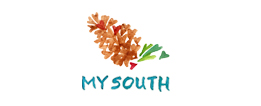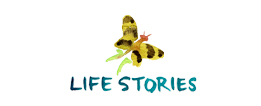The autumnal equinox arrives tomorrow, and although you wouldn’t know it by the temperatures in Mississippi, that marks the official end of summer. The children and I had some family goals for reading this summer that were a little too ambitious for our travel schedule, but each of us managed to contribute several completed books to our Montgomery Summer Reading List. The kids were quick to insist that I include my own book selections on the list as well. Like me, each of the children really do like to read, but sometimes the fun gets dampened if the reading is some kind of “assignment.” I think they wanted to be sure this was actually a fun family activity and NOT some subversive summertime homework exercise!
In addition to adding some purely fun mysteries to the Summer Reading List, I also read a few challenging books — great books that challenged me to think beneath the surface, to look critically at the culture around me, to wonder at the power of storytelling, and to be moved by the experiences of other humans. Several selections focused on events and the political and social climate of some of my coming-of-age years, the years that are too recent to show up in any of the textbooks in school. As we close out summer, I wanted to share a few posts with thoughts on some of the books I would definitely recommend you add to your reading list.


Nixonland: The Rise of a President and the Fracturing of America
by Rick Perlstein
 I started 2016 wanting to read about politics and history — maybe because the presidential contest was already in such full swing. I was particularly interested in the 1960s and 1970s, and I had been re-reading several books about the story of Watergate by Bob Woodward, including All the President’s Men, The Final Days, and his tracing of Watergate’s impact through five subsequent presidencies in Shadow. My Scribd e-reader subscription offers up suggested reading based on your book history, and Rick Perlstein’s book, Nixonland, popped up. I decided to take a look.
I started 2016 wanting to read about politics and history — maybe because the presidential contest was already in such full swing. I was particularly interested in the 1960s and 1970s, and I had been re-reading several books about the story of Watergate by Bob Woodward, including All the President’s Men, The Final Days, and his tracing of Watergate’s impact through five subsequent presidencies in Shadow. My Scribd e-reader subscription offers up suggested reading based on your book history, and Rick Perlstein’s book, Nixonland, popped up. I decided to take a look.
The book was published in 2008, and was listed as a “notable book” by the New York Times and a number of other publications. As the subtitle suggests, Nixonland is mainly the story of Richard Nixon’s political rise from the somewhat-maligned and disrespected role as Eisenhower’s Vice President to his role as the eventual President of the United States and early architect of the modern Republican Party — plus, many of the bumps in between. It is also, however, an amazingly detailed account of so much of the racial unrest that occurred during those decades, the anti-war movement, the transformation of the Republican and Democratic parties as their souls and public images virtually switched, and ultimately, the dividing of America along the political rift these realities created. I’ve seen no better account identifying the roots of today’s divisive and deadlocked political culture.
Nixonland is not an easy or a short read. It took me a big part of the summer to get through it because of how much detail the author includes. There was a lot to absorb. However, it kept my interest the whole time because of how the author dramatically weaved together so many real-life stories along with Perlstein’s poignant conclusions. It is probably the best and most comprehensive book I’ve ever read chronicling the politics and social issues of the 1960s and early 1970s. What struck me about the book was how much of the political climate mirrors what we see today. Perlstein very effectively traced seeds of our current polarized culture through these very turbulent and formative years in modern American society. So many players in modern politics pop up in the book — presidents, strategists, and politicians who dominate our news stream today. It was amazing and eye-opening to see the dots connected between so many playmakers in the public sphere.
In many ways, Nixonland was a sad book to me. It definitely turned the mirror on American culture and so much of the social issues that are still left unresolved. Reading accounts of the Watts riots, segregation, and the very divided government response alongside today’s Twitter accounts of the Black Lives Matter movement and continued racial tensions now 50 years later was very disheartening to me. To be facing some of the same issues so many years later feels like an indictment on my generation. And, race was just one social issue that emerged. Poverty, trust in government, the specter of war, the role of faith in the public sector, and the emergence of media as a catalyst and impactor of public opinion are all areas from that era that mirror today’s climate.
Perlstein ends his book at Nixon’s landslide victory for re-election in 1972, even as the foreshadowing of the Watergate fallout was looming near. He points out that just 20 months after a routing of his political opposition, Nixon would become the only U. S. President to resign the office in disgrace. Perlstein also ended with an evaluation of “Nixonland’s” logical trajectory — the polarized vitriol we see on every channel today.
“In this book I have written of the rise of two American identities, two groups of Americans, staring at each other from behind a common divide, each equally convinced of its own righteousness, each equally convinced the other group was defined by its evil.
What Richard Nixon left behind was the very terms of our national self-image: a notion that there are two kinds of Americans…. and both have learned to consider the other not quite American at all.”
I highly recommend this book as a necessary read for those like me, who were barely born during these pivotal years in American culture, and yet have had so few opportunities to learn about them in ways that draw the threads tying the last decades of the 20th century to today. Nixonland, though a challenging read, also served as an inspiration for me to engage more critically in this year’s election process, to seek out a variety of voices telling the tales of social issues in our nation, and to re-engage with my own thoughts and beliefs about the nature of the democracy I’m handing down to my children.

 Hello & welcome! I’m Haley Montgomery, and I’m the designer and owner of
Hello & welcome! I’m Haley Montgomery, and I’m the designer and owner of 















